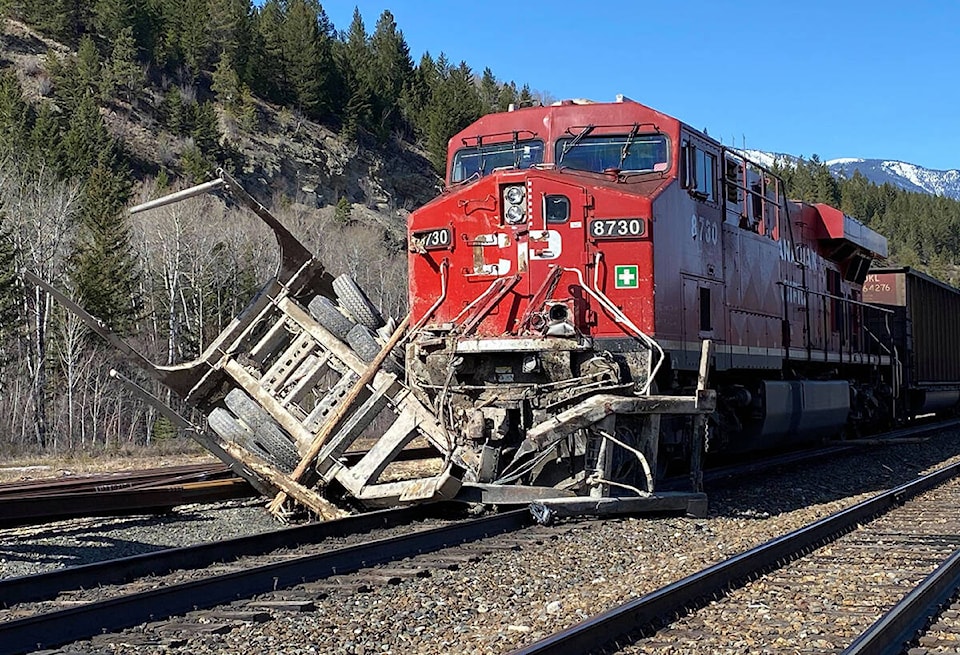According to the Alberta RCMP, a motorist is more likely to die in a collision with a train than with another motor vehicle.
Statistics released by RCMP Central Alberta Traffic Services show that in 2021 alone there were 120 collisions at railway crossings across Canada which resulted in 14 deaths and 23 serious injuries.
Trains are big. Trains are heavy. According to an RCMP release a freight train travelling at 100 km/h requires about two kilometres to stop. A lighter, faster, passenger train travelling around 160 km/h requires about the same distance.
In comparison, a car travelling 90 km/h can stop in about 60 metres.
RCMP Sgt. Brian Herrick notes the majority of collisions occur when the train is travelling at less than 50 km/h.
A good number of railway crossings in Canada are equipped with flashing lights and gates which lower when a train approaches, and Herrick notes it is both illegal and deadly to go around the gates or to try and race a train across the tracks.
If for whatever reason someone’s vehicle gets trapped on a railway crossing, get everyone clear of the vehicle and call 911 and look for a 1-800 number which should be posted nearby.
Another note in the release is to always expect a train, as a lot of them do not follow set schedules but operate when the track is clear; in addition, be alert to a second train following behind the first or traveling on another set of tracks.
Finally, walking and playing on railway tracks is illegal, and tracks should only be crossed at designated crossings. In 2021, in addition to the collisions, there were 60 incidents of trespassing on railway tracks reported across Canada, including 41 fatalities and 14 significant injuries.
A final statistic released by the RCMP in the release indicates that most of these incidents involving trains occur within 40 kilometres of home.
Always follow the signs and markers and give the train the right of way, because as Herrick notes in the release even if you race a train and it’s a tie, “you lose.”
“Be smart. Be safe. Stay alive!” said Herrick.
